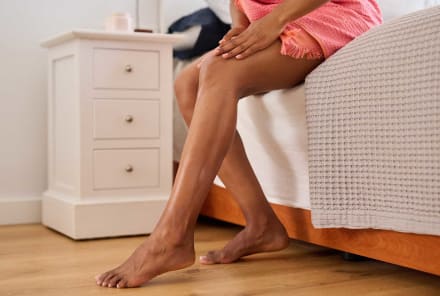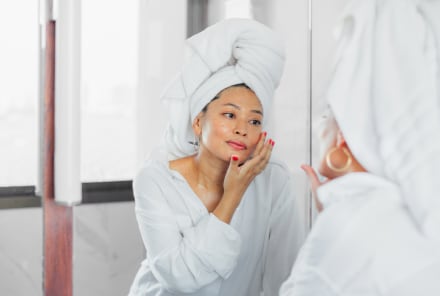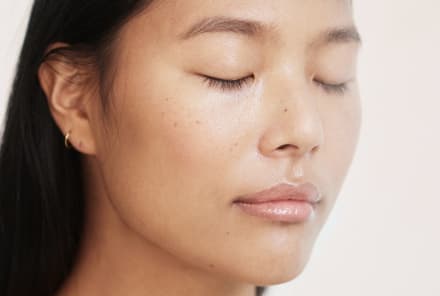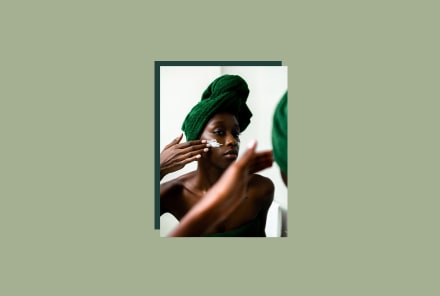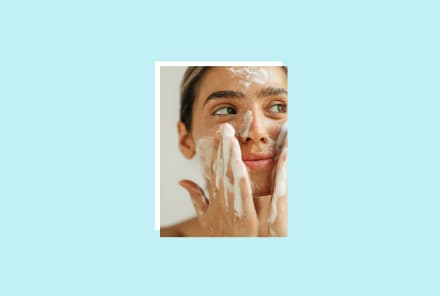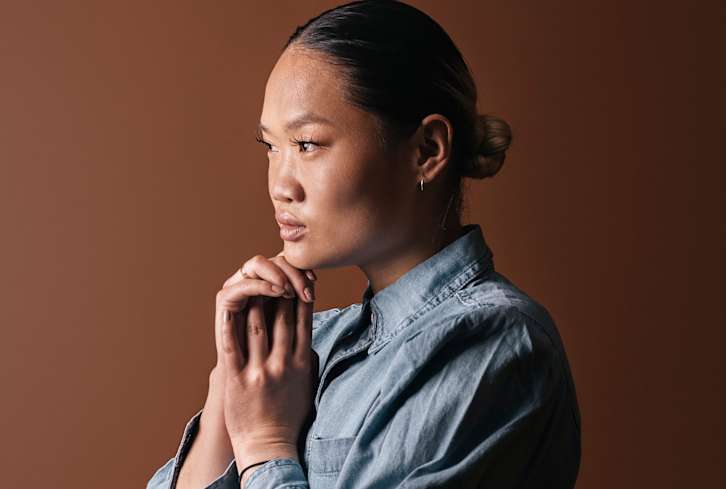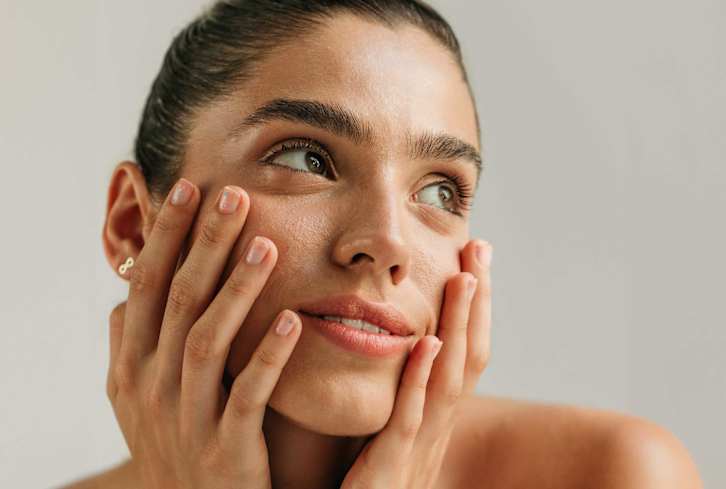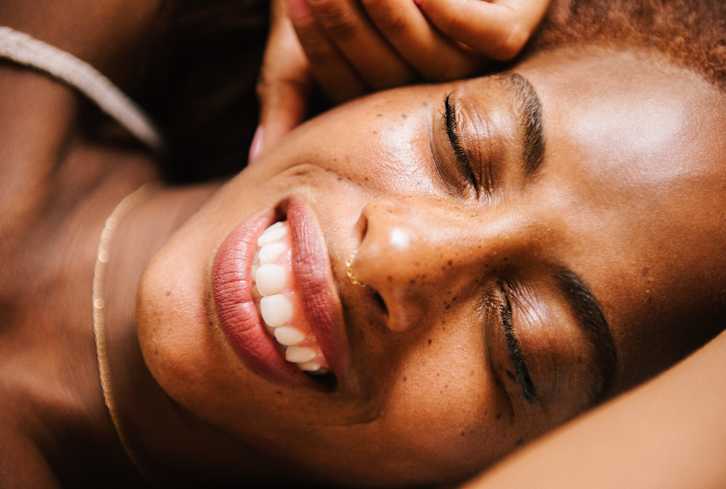Advertisement
An Esthetician & Acne Specialist's Tips For Dealing With Winter Breakouts

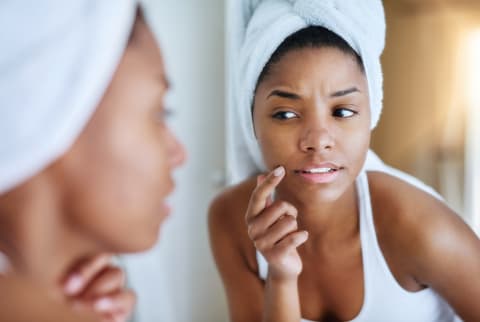
You may associate congested skin with warmer months, when the air is thick with humidity and the blazing temperatures leave you with a perpetual layer of sweat. But, alas, acne knows no season, and sometimes wintertime breakouts are even trickier to clear: Cold weather can exacerbate dry, flaky skin, but many ingredients that treat acne are also inherently drying (benzoyl peroxide and witch hazel come to mind). And when your skin barrier is continuously compromised, it's even more vulnerable to irritants, such as, oh, acne-causing bacteria. See the dilemma here?
It raises the question: How can you treat those pesky breakouts without completely robbing your skin of moisture? We tapped celebrity esthetician and certified acne specialist Zaida Gordon, founder of Skintegrity LA, for all of her winter breakout tips:
Stick to gentle, less drying ingredients.
Rather than opting for the aforementioned benzoyl peroxide, witch hazel, and the like—Gordon first recommends seeking out ingredients that heal breakouts and calm the skin simultaneously. "Apply a less drying acne treatment, such as a sulfur spot treatment," she says (like this option from Face Reality). Sulfur is a great ingredient for sensitive skin, as it helps remove oil from the surface of the skin and prevent blackheads, yet it's less irritating than other acne-fighting ingredients.
Tea tree oil is another top choice for clearing acne without stripping the skin: The essential oil has antifungal, antiviral, and antibacterial properties1—one study found that a 5% tea tree oil topical gel helped to significantly improve mild to moderate acne symptoms2—but it's also anti-inflammatory and has the ability to soothe the skin.
Or, you can always repurpose a harsher (yet effective) serum, lotion, or mask as a spot treatment: Simply tap the solution onto the zits and let it sit overnight. That way, you're targeting the breakout without stripping your whole complexion of moisture.
Try gentle clay masks.
Gordon is also a fan of "using a gentle, detoxing clay mask instead of too many harsh acids." Clays can effectively draw out oil and gunk from the pores as they dry—once you wash off the mask, those bits swirl down the drain along with it.
Mild kaolin clay is beloved for sensitive skin, while bentonite clay is especially stellar at clearing acne: One study found that a mask of jojoba oil and bentonite clay3—applied two or three times a week for six weeks—could reduce the number of acne lesions by an average of 54%. This Volcanic Sea Clay Detox Masque from MARA contains both types of clay, and it doesn't fully dry down into a hard, cracked shell, so it's especially gentle on the skin.
Use ice.
We get it: The last thing you want to do during frigid weather is press an ice cube onto your face. But Gordon recommends icing (especially if you have inflamed acne) twice a day post-cleansing to help shrink the mounds. Ice, you see, is a vasoconstrictor—meaning, it constricts the blood vessels in your skin, which limits flow to the area and retracts the inflammation.
Just make sure to cover the ice with a towel before holding it up to your skin; you don't want to completely shock your skin with the freezing temperature, as that can lead to even more inflammation, sometimes broken capillaries.
Invest in a humidifier.
Ah, humidifiers: Your skin's best friend this chilly season. "A humidifier in the bedroom can help offset the drying effects of central heating and prevent over-drying the skin," notes Gordon. "Many times, skin will overproduce sebum in an effort to hydrate itself, which can result in more breakouts."
Specifically, the dehydration can cause the release of CRH (corticotropin-releasing hormone)4, a hormone that tells your sebaceous glands to produce more oil to compensate. Humidifiers can moisten up the air and stop the dehydration in its tracks; here is one we love, and these are some of our favorite desk options, or you can try some other DIY methods to increase the humidity in your home.
The takeaway.
Clearing breakouts often takes time, patience, and a little guesswork—but in the wintertime, it may take even more precision and care. The key is balancing the acne-fighting (and typically drying) ingredients with soothing, hydrating players that tend to the skin barrier and keeping your complexion moisturized.
Watch Next
Enjoy some of our favorite clips from classes
Enjoy some of our favorite clips from classes
What Is Meditation?
Mindfulness/Spirituality | Light Watkins
Box Breathing
Mindfulness/Spirituality | Gwen Dittmar
What Breathwork Can Address
Mindfulness/Spirituality | Gwen Dittmar
The 8 Limbs of Yoga - What is Asana?
Yoga | Caley Alyssa
Two Standing Postures to Open Up Tight Hips
Yoga | Caley Alyssa
How Plants Can Optimize Athletic Performance
Nutrition | Rich Roll
What to Eat Before a Workout
Nutrition | Rich Roll
How Ayurveda Helps Us Navigate Modern Life
Nutrition | Sahara Rose
Messages About Love & Relationships
Love & Relationships | Esther Perel
Love Languages
Love & Relationships | Esther Perel
-v1646695196476.jpg?1148x800)


